NATURAL & NON-TOXIC WAYS TO CLEAN YOUR HOME
November 25, 2024
With so many cleaning products on the market, it’s easy to overlook the impact they may have on our health and our home. Many conventional cleaners are loaded with harsh chemicals that can affect air quality, irritate the skin, and even pose risks to the health of our pets and children. Choosing natural and non-toxic cleaning solutions allows you to create a healthier home while still achieving a spotless space. In this guide, we’ll dive into what makes these cleaners effective, why making the switch is worth it, and share some of my favorite DIY recipes that make cleaning simple, safe, and sustainable.

Explore some of my favorite recommended products to support your health journey (displayed on this page as affiliate links), and remember to always consult a healthcare professional before making any changes to your diet or lifestyle—full medical disclaimer here.
Understanding Natural & Non-Toxic Cleaners
Natural and non-toxic cleaners are products made from simple, plant-based, or mineral ingredients that safely tackle dirt, grime, and germs without harmful chemicals. Unlike conventional cleaners, which often include synthetic fragrances, dyes, and harsh substances (even the ones claiming to be healthier) natural cleaners rely on ingredients like vinegar, hydrogen peroxide and baking soda to clean effectively. Not only are these ingredients safe for daily use, but they are also likely already sitting in your kitchen or medicine cabinet.
Non-toxic cleaners avoid common irritants like phthalates, sulfates, and bleach, which can cause skin reactions, respiratory issues, and even disrupt hormones over time. Instead, they focus on using naturally sourced agents that cut grease, remove stains, and kill bacteria without releasing harsh chemicals. This makes natural cleaners ideal for families, pet owners, and anyone looking to reduce chemical exposure in their home.
Why You Should Switch to Natural Cleaning
Here are some common harmful chemicals found in store-bought cleaners:
- Ammonia – Found in glass cleaners, ammonia can irritate the respiratory tract and exacerbate asthma symptoms.
- Bleach – A powerful disinfectant that can cause burns and release toxic fumes when mixed with other substances.
- Phthalates – Often used for fragrance in air fresheners and cleaners, phthalates are linked to hormone disruption and reproductive health issues.
- Formaldehyde – A known carcinogen found in some disinfectants and floor cleaners that can cause skin irritation and breathing difficulties.
Triclosan – This antibacterial agent, found in some soaps and disinfectants, which may contribute to antibiotic resistance.
In contrast, natural cleaners use simple and well known ingredients which are not only safe but also easier to find and much cheaper. These DIY cleaning solutions are effective at tackling grime and germs, without the need for expensive or potentially harmful chemicals. Plus, making your own cleaners takes minimal time and effort, when I run out it takes me less than a minute to refill a container and continue cleaning. The affordability and ease of natural cleaning make it a practical and safer option for any household.
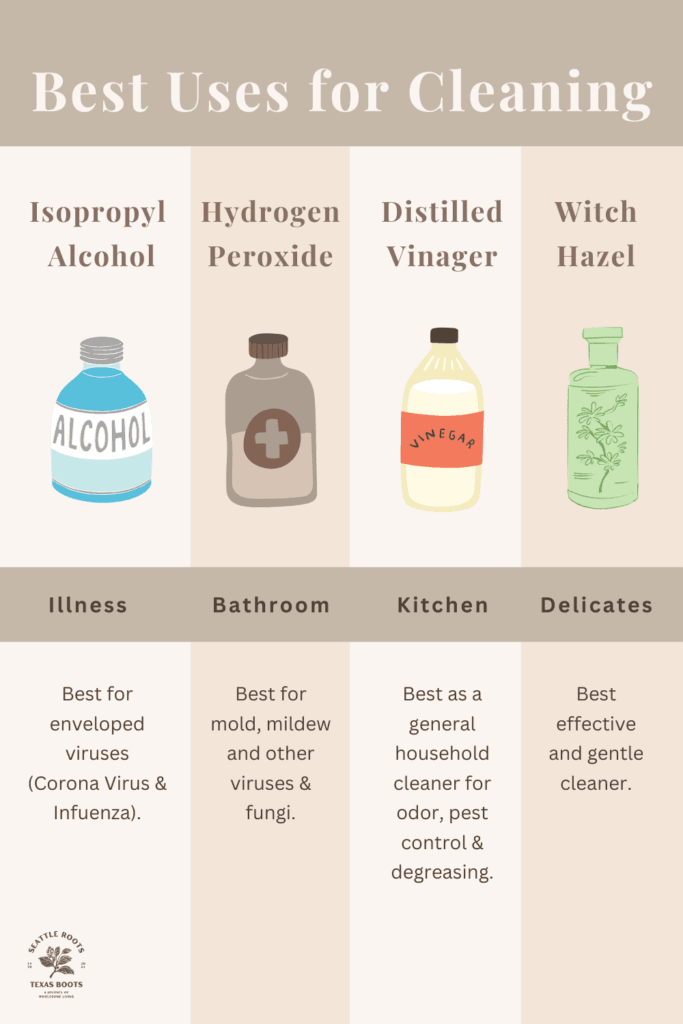
Ingredients to Use In Homemade Cleaners
Below are some essential Ingredients for DIY Natural Cleaners and their abilities. I can honestly say some of these ingredients work better than any store bought cleaner I have used.
Ingredients to Highlight:
- Vinegar: It’s acidic properties help break down grease, remove stains, neutralize odors and kill some bacteria and mold.
- Baking Soda (sodium bicarbonate) : Useful as a non-abrasive scrub on hard surfaces and can help to brighten and whiten fabric. It also works to neutralize odors instead of masking odors.
- Castile Soap: A gentle and non-toxic soap base made from plant-based oils. It is also very versatile, with applications from skin care to cleaning the floors.
- Essential Oils: To add a natural fragrance which is non-toxic and comes directly from the source. Essential oils also have properties such as disinfecting, degreasing, deodorizing, pest deterrent, and even calming aspects. Some have antibacterial, antiviral, and anti fungal abilities.
- Lemon Juice: It’s has acidic and antibacterial properties. Natural bleaching agent, degreaser, stain remover and hard water and lime scale remover.
- Hydrogen Peroxide 3%: Mild disinfectant, mold and mildew remover, stain remover, grout cleaner, and whiten laundry.
- Epsom Salt (magnesium sulfate): It improves lather and rinse performance by boosting detergent, softens water, removes odor, and a mild abrasive for scrubbing.
- Rubbing Alcohol (isopropyl alcohol): Streak free disinfecting, degreasing, deodorizing, and stain and ink remover.
- Arrowroot (or Cornstarch): Great for glass and stainless steal due to polishing agents, streak prevention and residue absorbing.
- Witch Hazel: Tightens and cleans surfaces removing grease dirt and grime with antibacterial and deotorizing properties. This is a very gentle cleaning ingredient and can also help essential oils evenly distribute into sprays.
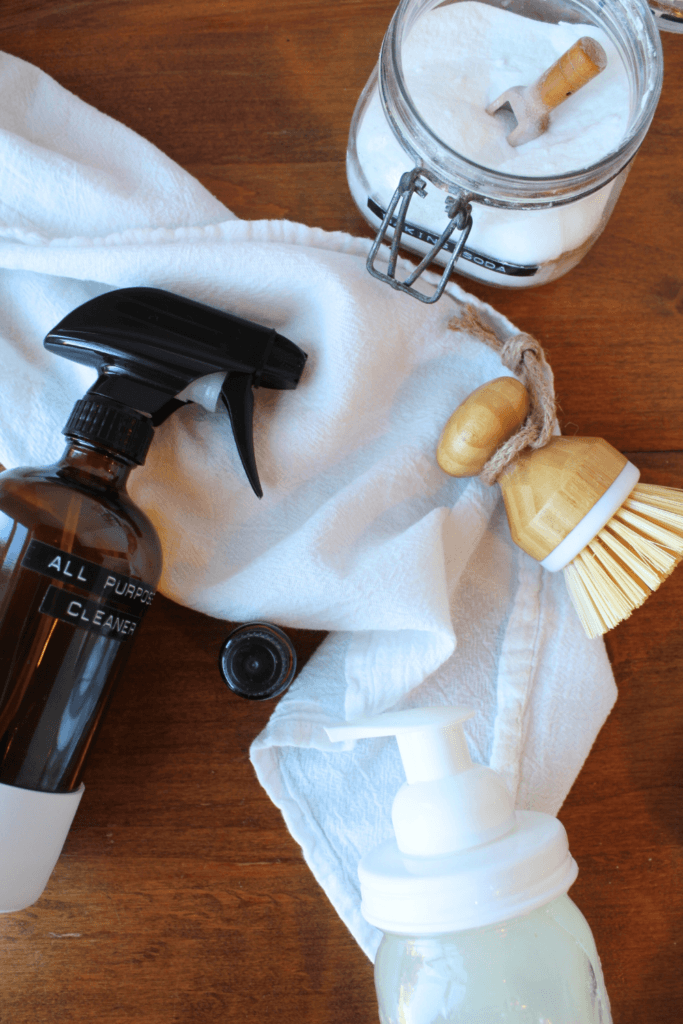
My Favorite recipes
1. Fridge Deodorizer
Recipe:
- Mason Jar w/ Ring
- Square of Fabric
- Baking Soda
- (optional) EO
How to use:
Fill half of jar with baking soda and place fabric piece then lid on jar. Put jar in back of fridge and replace at least every three months.
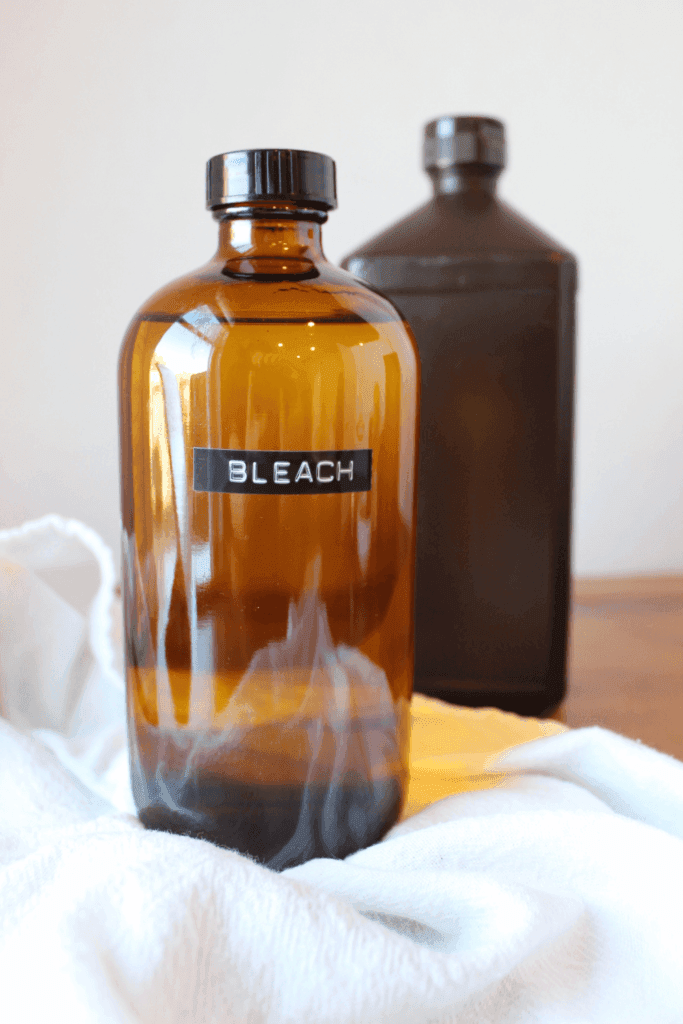
2. Bleach
Recipe:
- 16oz Amber Bottle
- 3 cup Water
- 1/2 cup Hydrogen Peroxide 3%
- 1/4 cup Lemon Juice
How to use:
In a top loader place 1/2 cup into bleach slot or dilute into 1 cup of water and place directly in drum. In a front loader place 1/4 cup into bleach slot undiluted. Best used in cold water on white fabrics to brighten and lighten, or for disinfecting heavily soiled items.
*Container needs to be opaque or amber to not let as much UV light in which will keep the mixture (hydrogen peroxide) safe and unchanged.
*Do not use hydrogen peroxide over a 3% solution, higher concentrations can be unsafe.
*Do not use with DIY fabric softener (vinegar).
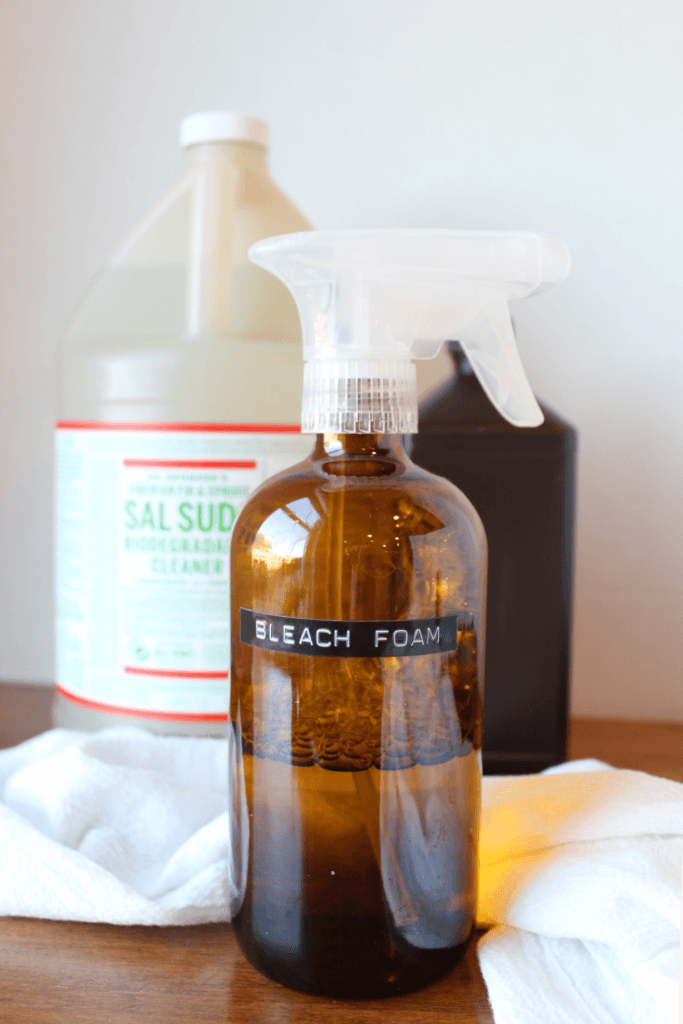
3. Foam Bleach Spray
Recipe:
- 16oz Amber Spray Bottle
- Foaming Spray Head (optional)
- 1 cup Homemade Bleach
- 1/4 cup Sal Suds
- Rest Filled with Water
How to use:
Best used in bathrooms in sinks, showers, toilets, and grout to remove dirt, grime, and mold. The longer you let it sit and work before rinsing the better the results.
*Container needs to be opaque or amber to not let as much UV light in which will keep the mixture (hydrogen peroxide) safe and unchanged.
*Can damage stone or marble countertops, strip wood, bleach fabric or wood, and oxidize metal.
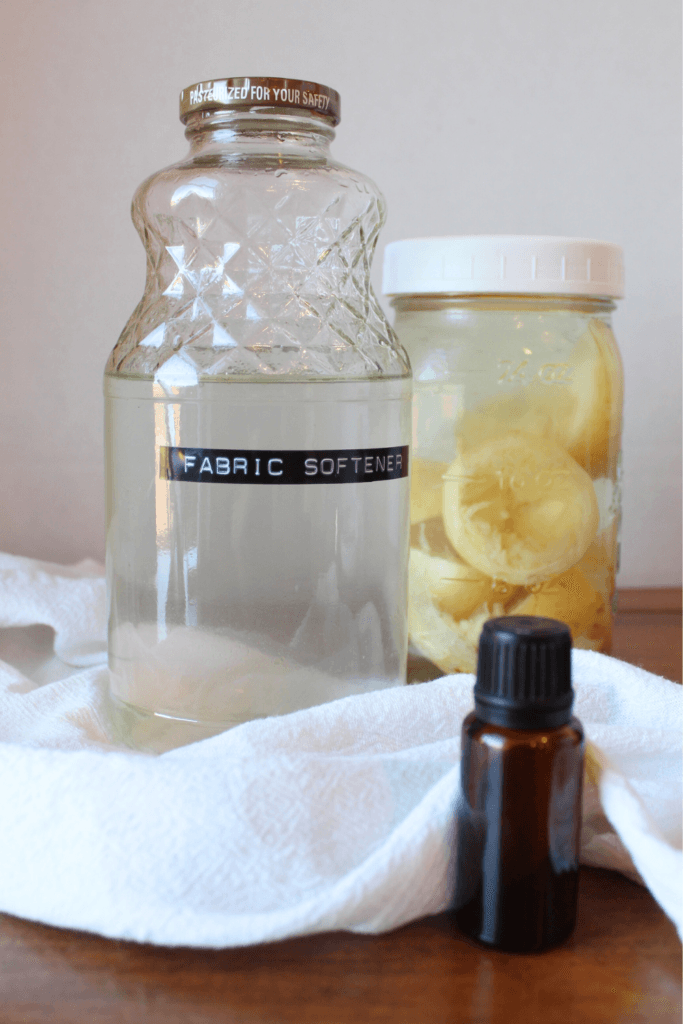
4. Fabric Softener
Recipe:
- A Bottle
- Fill with Vinegar
- (optional) 30 drops EO
How to use:
Add 1/2 cup to fabric softener slot on washer. Best for brightening colored fabrics while also deodorizing laundry smells.
*Do not use with DIY bleach (hydrogen peroxide).
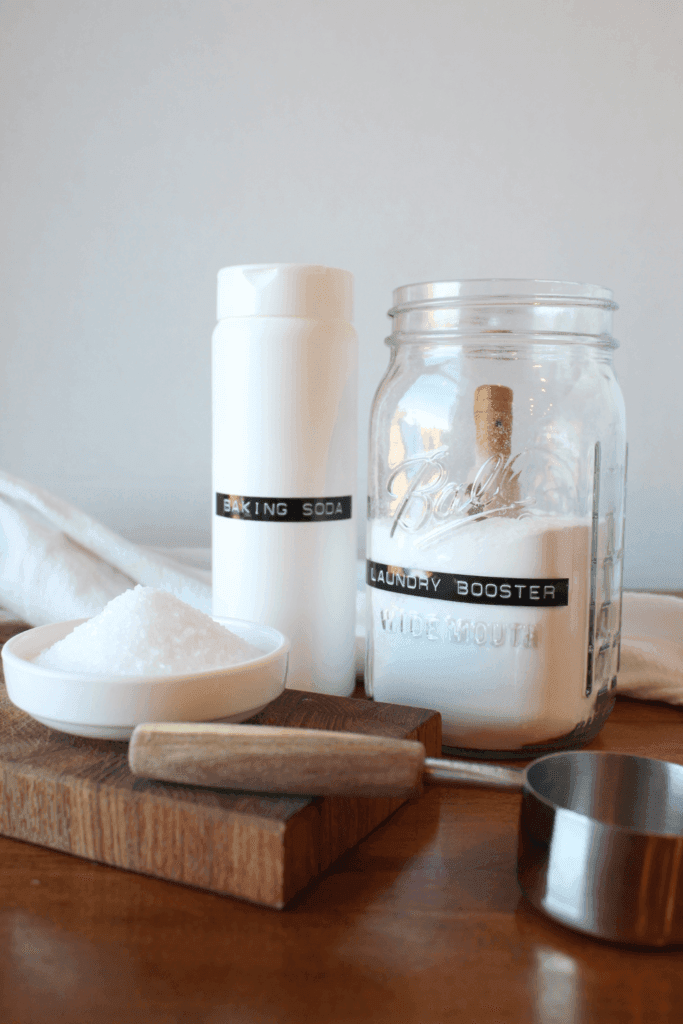
5. Scent Booster
Recipe:
- 32 oz Glass Jar
- 2 cup Baking Soda
- 2 cups Epsom salt
- (optional) 20 drops EO
How to use:
Combine ingredients into a jar and sprinkle 2-4 tablespoons of booster on top of clothes. For best use let booster and laundry soak for 30-60 minutes before wash or just run with normal wash.
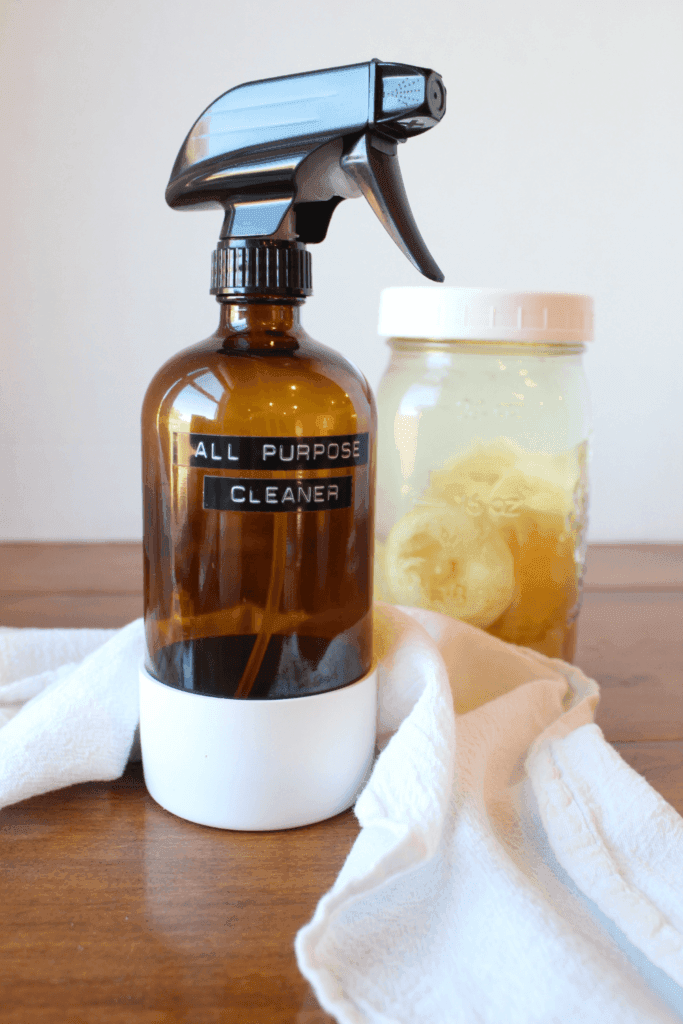
6. All-Purpose Spray
Recipe:
- 16 oz Spray Bottle
- 1/4 cup Distilled Vinegar
- 2 drops of Sal Suds
- Fill with Water
- (optional) 10 drops EO
How to use:
Combine ingredients into a spray bottle. Best used for daily cleaning in kitchen on grease sticky surfaces.
*Can overtime dull stone and strip coating on wood, electronics and metal.
7. Heavy Disinfectant Spray
Recipe:
- 16 oz Spray Bottle
- 1/4 cup Isopropyl Alcohol
- 2 drops of Sal Suds
- Fill with Water
- (optional) 10 drops EO
How to use:
Combine ingredients into a spray bottle. Best used for occasional cleaning of hazardous materials or viruses vinegar can’t kill.
*Can damage paint and wood, dry out leather, can cloud or crack plastic, and fade fabrics.
8. Gentle Cleaning Spray
Recipe:
- 16 oz Spray Bottle
- 1/4 cup Witch Hazel
- 2 drops of Sal Suds
- Fill with Water
- (optional) 10 drops EO
How to use:
Combine ingredients into a spray bottle. Best used for sensitive areas as a safe and gentle cleaner. Things like pet beds, baby toys and yoga mats.
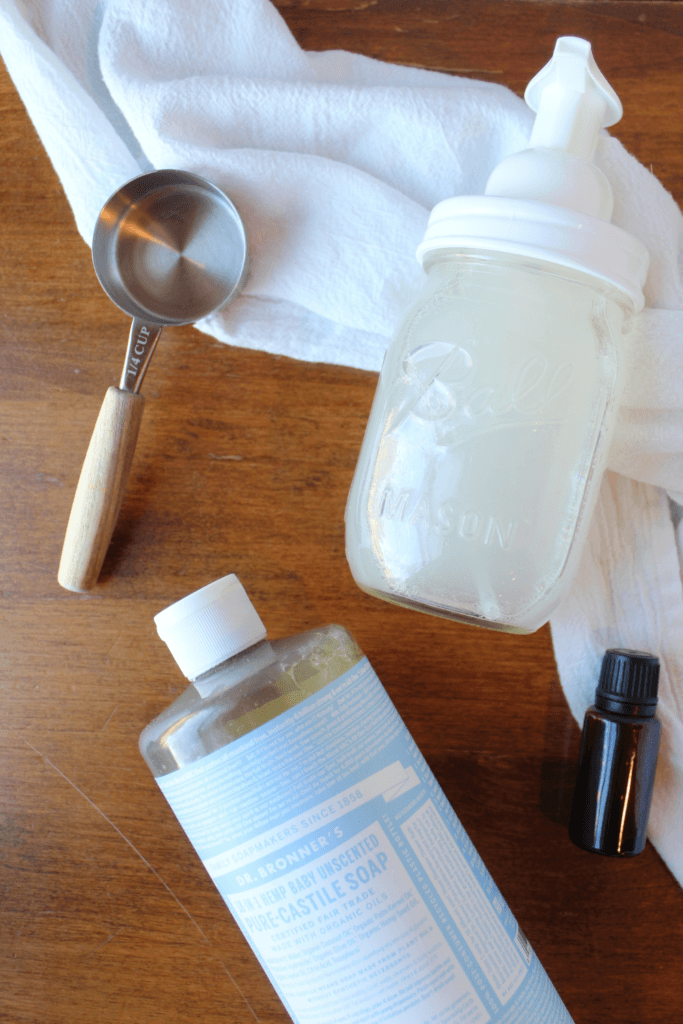
9. Hand Soap
Recipe:
- 16 oz Soap Dispenser (mason jar with pump lid)
- 1/4 cup Castile Soap
- Fill with Water
- (optional) 10 drops EO
How to use:
Combine ingredients into a soap dispenser and use as often as needed to clean hands.
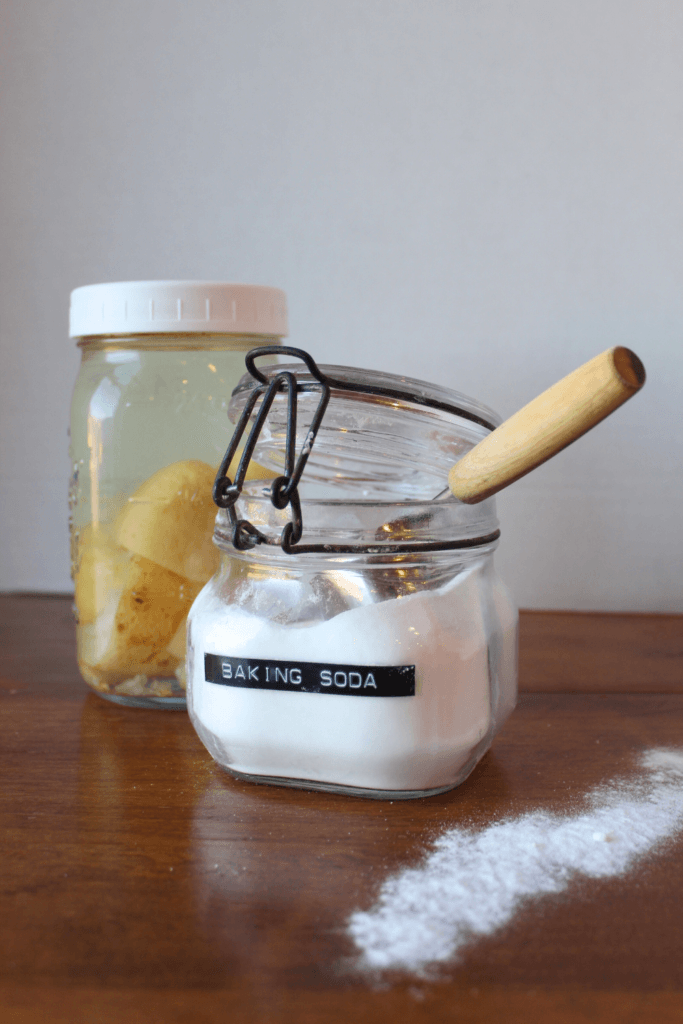
10. Drain Cleaner
Recipe:
- 1/2 cup Baking Soda
- 1 cup Distilled Vinegar
How to use:
Fill 1/2 cup of baking soda or more into drain, then slowly pour in vinegar allowing it to bubble and break up in-between pours (this will help loosen up debris trapped in pipes). After all baking soda has been dissolved with vinegar let it sit for 15-30 minutes, then run hot water down drain for a minute to clear out the loosened grime.
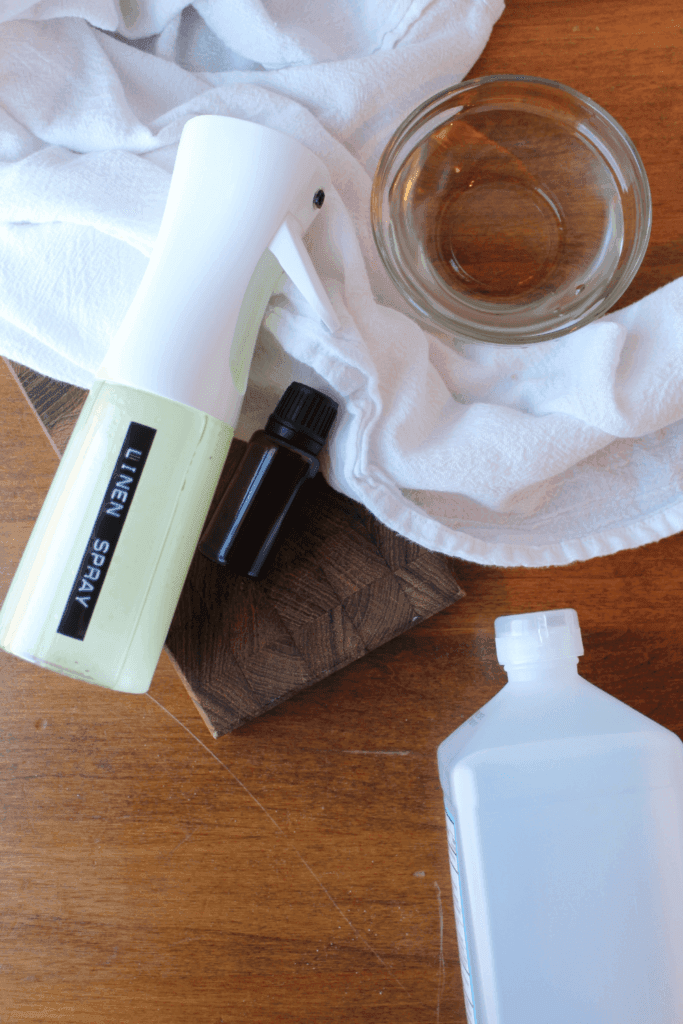
11. Linen Spray
Recipe:
- 16 oz Spray Bottle
- 1/4 cup Witch Hazel
- Fill with Water
- (optional) 20 drops EO
How to use:
Combine ingredients into a spray bottle and use as often as desired to refresh and deodorize fabrics.
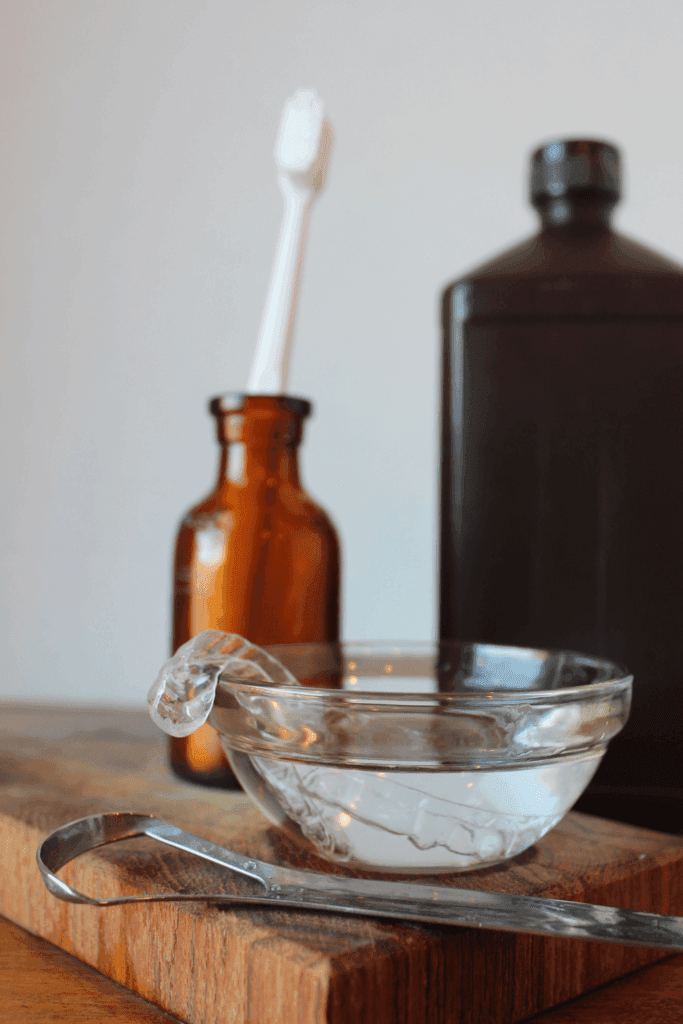
12. Oral Tool & Appliance Cleaner
Recipe:
- Two parts Water & one part Hydrogen Peroxide 3%
- (optional) pinch of Baking Soda
How to use:
Place toothbrush, tongue scraper dentures and/or retainers into mixtures after rinsing item with water. Let sit in mixture for 15-30 minutes and rinse with water before using again. Limit use on dentures or retainer to once or twice a week to avoid extra wear and tear.
*Make sure to dilute the hydrogen peroxide to a 1% solution by mixing one part hydrogen peroxide to two parts water first before use on oral appliances.
*Do not drink mixture and make sure to rinse throughly before using appliances again.
13. Powdered Laundry Detergent
Recipe:
- 3 cups Baking Soda
- 3 cups Washing Soda
- 1 cup Epsom Salt
- 1/2 cup salt
- (optional) 20 drops EO
How to use:
Place two tablespoons into the detergent section of the drawer or directly into the machine. If you have a heavier or more soiled load add in an extra tablespoon.
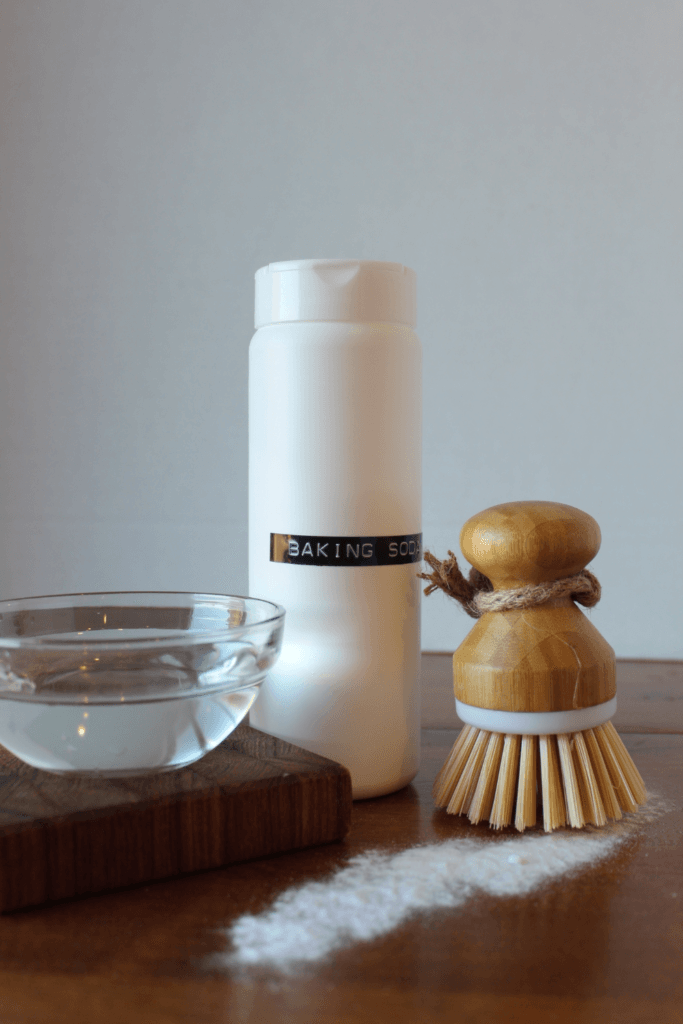
14. Gentle Scrub
Recipe:
- Baking Soda
- Water
- (optional) Vinegar
How to use:
Mix ingredients to make a paste to your liking, use with rag or sponge to remove build up or stains. Vinegar will help the scrub by bringing up stains on hard surfaces.
14. Dish Soap
Recipe:
- 1/4 cup Sal Suds
- 16oz Amber Spray Bottle
- Foaming Spray Head (optional)
- Rest Filled with Water
How to use:
Pour Sal Suds into the glass bottle and fill the rest up with warm water. Stir to combine.
*If you choose to use a glass spray bottle, I would recommend getting a silicone boot for the bottle. This is so there is a less of a chance of breaking when doing dishes.
15. Floor Cleaner
Recipe:
- Bottle
- 1/4 cup Sal Suds
- 1 cup Vinegar
- Rest Filled with Water
How to use:
Pour Sal Suds into the bottle with the vinegar and fill the rest up with warm water. Mix to combine. To use place approximately four tablespoons per gallon of water.
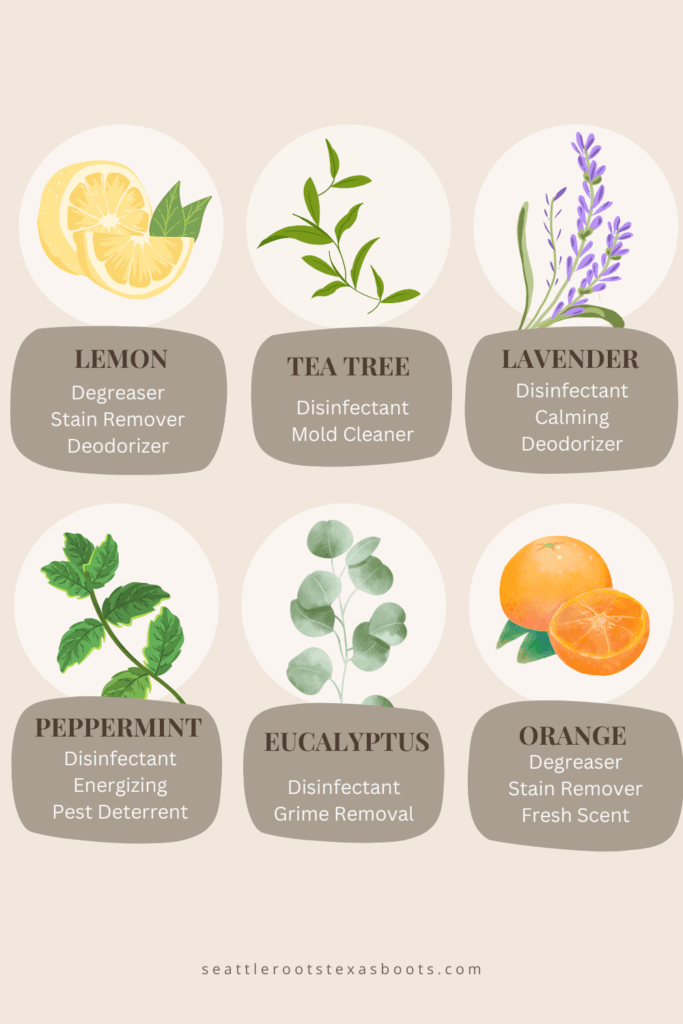
Infusing Vinegar
Infusing scents into distilled vinegar is my favorite way to use vinegars in cleaning. This is because there is multiple benefits outside of being cheaper than using good quality essential oils.
True essential oils need to be high quality and properly sourced making sure they actually come from the true source and not a lab. When buying essential oils make sure it says 100% pure and ensure the botanical name is listed (example: instead of lavender it says Lavandula Augustifolia) also a good quality oil will be in a amber glass bottle.
To infuse your own cleaning vinegars place the natural form of the leaf or fruit or plant into the vinegar and let it sit in a dark cool place for 1-2 weeks. After steeping strain infused vinegar from solids. My favorite to make for my all-purpose cleaner would be to make lemon vinegar by placing used lemon slices into a jar of vinegar.
Things not to do when cleaning
Do Not Mix these Chemicals:
- Vinegar & Baking Soda – though these are a great team for lifting stains and debris from pipes, mixing these two ingredients cancels out all their cleaning and disinfecting capabilities. So make sure when using them in the same wash you are releasing them at different times in the cycle, washing and rinsing cycles.
- Vinegar & Hydrogen Peroxide – when mixed together they form Peracetic Acid which can be dangerous to the lungs, skin and eyes.
- Hydrogen Peroxide & Bleach – when mixed together they form Chlorine Gas which is toxic and can cause respiratory issues, eye irritation, etc.
Safe Mixing Tips:
To be on the safe side always dilute acids such as vinegar and hydrogen peroxide with water. Essential oils are also safer when diluted as opposed to putting directly from dropper to skin or surfaces.
Also, remember when using a new cleaning solution or using on a new surface to test on a small inconspicuous spot first before using on the entire surface. You never know how a particular fabric, surface or coating will react to a new cleaner.

My wife has fallen in love with this and keeps sending it to me.
This is fabulous. Now I just need a dish soap, a dish washer, laundry soap. Can’t wait to try the above.
I’m so happy to hear it! The others are in the works I hope to provide you with the solutions soon.